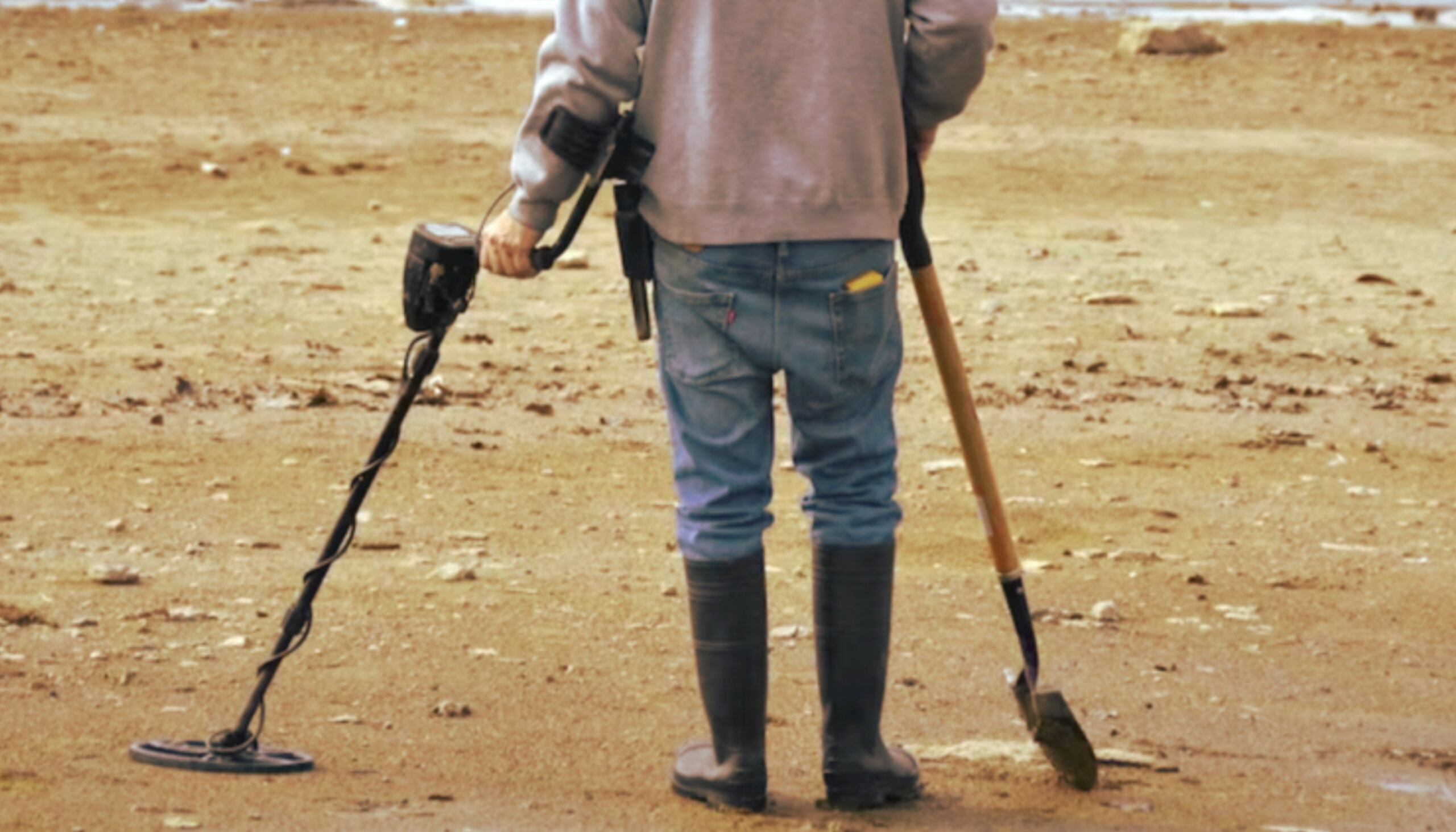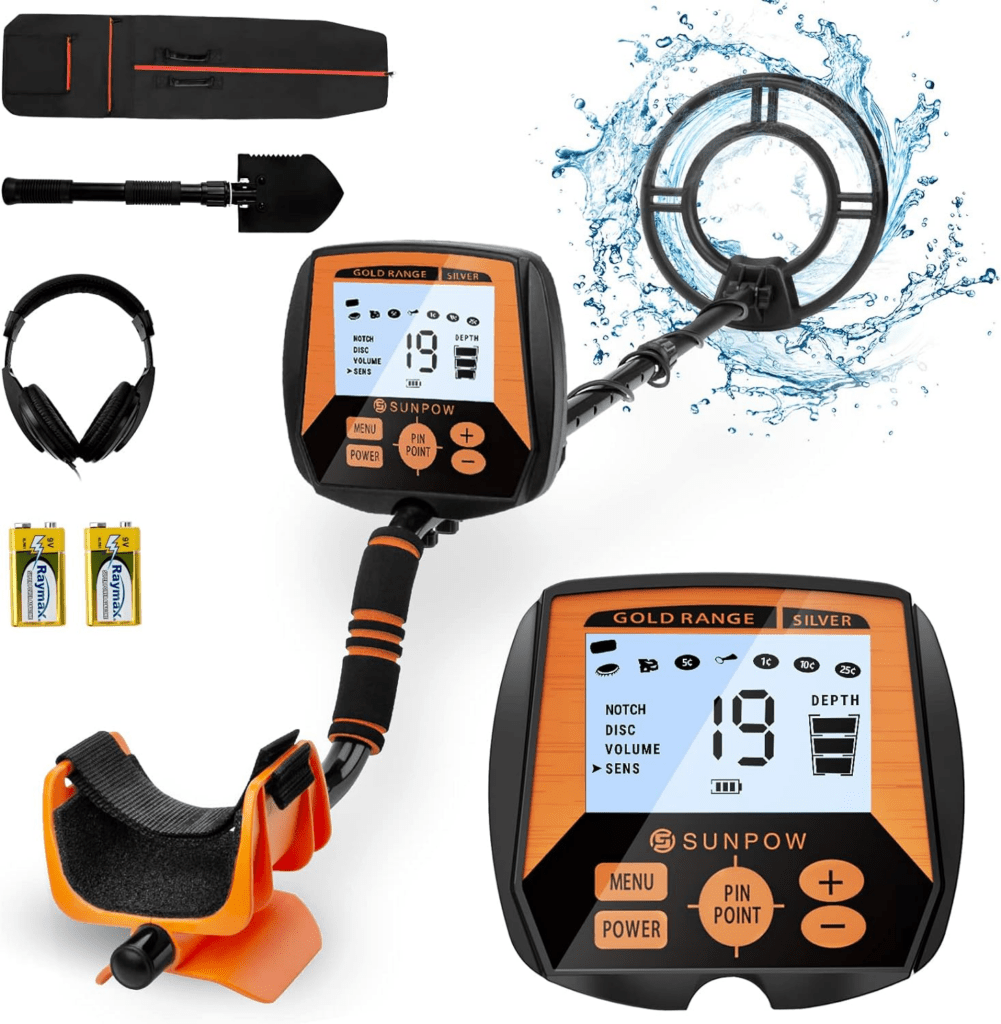Desert gold prospecting in the Southwest offers a unique and rewarding adventure that combines the excitement of exploration with the potential to uncover valuable gold deposits.
The arid landscapes of the desert are rich in hidden treasures, waiting to be discovered by those with the right knowledge and techniques.
From ancient riverbeds to eroded washes, these regions are filled with gold nuggets and other valuable items, making them a prime destination for prospectors.
With modern technology like high-accuracy metal detectors and a good understanding of the area’s geology, today’s adventurers can significantly improve their chances of striking gold and enjoying the thrill of the hunt.
As part of the Amazon Associate and eBay Partner Programme, we earn from qualifying purchases.

5 Tips for Finding Gold in the Desert
1. Do Your Research
Before you head out into the desert, it’s essential to do your research. Learn as much as you can about the geology and history of gold mining in the area you plan to explore.
Understanding the region’s geological features and past mining activities will help you narrow down your search and focus on the most promising areas.
Look for information on known gold deposits, geological maps, and any clues or indicators that can guide you in your prospecting journey.
2. Use the Right Tools
Having the right tools can significantly enhance your chances of finding gold in the desert. Consider investing in tools such as gold pans, sluices, and of course metal detectors.
Gold pans are versatile and allow you to separate gold from sediment in waterways.
Sluices are effective for processing larger volumes of material, while metal detectors can help you locate gold nuggets or particles buried beneath the surface.
Choose the tools that suit your prospecting style and budget, and learn how to use them effectively.
SUNPOW Professional High Accuracy Metal Detector
Features a 10″ search coil with upgraded DSP chip for deeper 10-inch detection, high accuracy and strong anti-interference, 5 versatile detection modes, adjustable height for all users, and IP68 waterproof search coil for shallow water detection.

3. Be Patient
Finding gold in the desert requires patience and persistence. It’s important to set realistic expectations and understand that striking it rich overnight is unlikely.
Gold prospecting is a gradual process that involves carefully searching and processing materials to uncover valuable deposits.
Be prepared to invest time and effort into your prospecting endeavors. Stay positive, maintain a patient mindset, and keep searching.
With perseverance, you increase your chances of finding gold in the desert.
4. Be Safe
Safety should always be a top priority when prospecting in the desert.
The harsh desert environment can be challenging, so it’s crucial to take necessary precautions.
Before heading out, ensure you have an ample supply of water, food, and sunscreen to protect yourself from dehydration and sunburn.
Dress appropriately for the desert conditions and wear sturdy footwear.
It’s also advisable to inform someone about your plans, including your intended location and estimated return time. This way, if something goes wrong, help can be alerted.
5. Have Fun!
Gold prospecting in the desert is not only about finding precious metal but also about enjoying the experience.
Embrace the adventure, connect with nature, and appreciate the unique landscapes that the desert offers.
Remember to relax and have fun during your prospecting outings. Take in the sights and sounds of the desert, appreciate the solitude, and be open to discovering more than just gold.
The journey itself can be rewarding, regardless of the amount of gold you find.
Additional Tips for Finding Gold in the Desert
In addition to the five main tips mentioned above, here are some additional pointers to increase your chances of finding gold in the desert:
Look for Waterways
Search for areas where streams, rivers, or washes are present.
Gold is often carried downstream by water, so focusing on these areas can be productive.
Pay attention to bends, eddies, and irregularities in the water flow where gold may accumulate.
Target Bedrock
Gold is commonly found in cracks and crevices of bedrock.
Look for exposed bedrock formations or areas where bedrock is close to the surface.
Use tools like picks and crevice tools to carefully explore and extract gold from these areas.
Search for Quartz
Quartz is a mineral that often contains gold. Keep an eye out for areas with quartz veins, as they can be indicators of potential gold deposits. Investigate quartz-rich rock formations and pay attention to any signs of mineralization.
Explore Old Mining Activity Sites
Areas with a history of mining activity can be promising for gold prospecting.
Old mines, tailings piles, and mining camps often indicate the presence of gold.
Research historical records, maps, and books that document past mining operations in the desert.
Explore these areas with caution, respecting private property and following any regulations or restrictions.
Finding gold in the desert can be a challenging yet immensely rewarding pursuit.
To increase your chances of success, combine your knowledge with persistence and an adventurous spirit. The arid landscapes hide golden treasures waiting to be uncovered.
Embrace the beauty of the desert, enjoy the process, and let the thrill of gold prospecting guide you on this exciting quest.

Your n°1 source of information on the world of sandsports and desert adventure travel. Our articles are the result of extensive research, personal experience, and knowledge-sharing within the global sandboarding community.